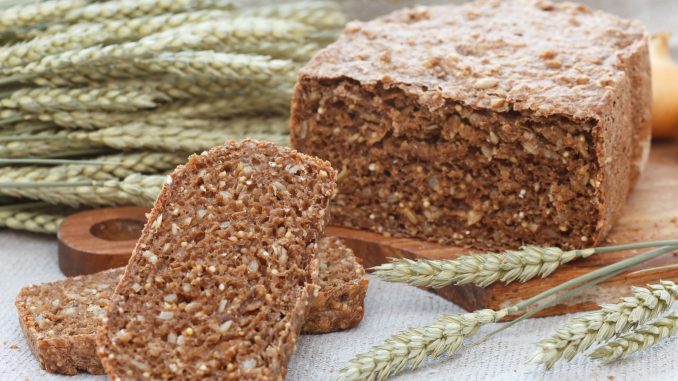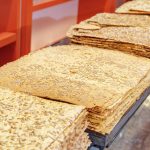
Sprouted grain bread, often hailed as a nutritional powerhouse and a healthier alternative to conventional bread, has gained immense popularity in recent years. Derived from grains that have undergone a germination process, sprouted grain bread offers a unique combination of flavor, texture, and nutritional benefits. In this 1000-word exploration, we delve into the fascinating world of sprouted grain bread, uncovering its history, production process, health advantages, and culinary versatility.
The Origins of Sprouted Grains
The practice of sprouting grains has ancient roots that span across cultures and civilizations. People have been sprouting grains, seeds, and legumes for centuries, primarily as a way to enhance the nutritional value of their diets. The process of sprouting involves soaking grains in water, allowing them to germinate, and then grinding them into a paste or dough for various culinary applications.
In ancient Egypt, for example, sprouted barley was used to make a type of porridge. In India, sprouted grains, known as “malt,” have been used for brewing alcoholic beverages like beer for thousands of years. Similarly, various traditional societies recognized the nutritional benefits of sprouted grains and integrated them into their diets. Today, this age-old practice has been revived and adapted to create sprouted grain bread.
The Production Process
Sprouted grain bread is made from grains, seeds, and legumes that have undergone a controlled sprouting process. The sprouting process begins by soaking the raw grains in water to initiate germination. This soaking period typically lasts for one to three days, depending on the grain type and specific recipe.
During the sprouting process, enzymes are activated, which break down some of the starches and proteins in the grains. This enzymatic activity leads to increased nutrient availability, easier digestion, and a sweeter, nuttier flavor. After sprouting, the grains are typically dehydrated at low temperatures to preserve their nutritional value. Once dried, the grains are milled into flour, which is then used to make the bread dough.
The flour from sprouted grains is different from conventional flour because it has a higher nutritional content. It is rich in vitamins, minerals, and antioxidants. Additionally, the sprouting process reduces the presence of certain antinutrients, such as phytic acid and enzyme inhibitors, which can interfere with nutrient absorption.
Nutritional Advantages
The nutritional advantages of sprouted grain bread are a major reason for its popularity. Here are some key benefits:
- Increased Nutrient Availability: Sprouting breaks down complex carbohydrates into simpler sugars, making the nutrients more accessible to the body. This includes enhanced levels of vitamins, minerals (such as B vitamins, folate, and iron), and essential amino acids.
- Improved Digestibility: The sprouting process reduces the content of antinutrients like phytic acid, which can inhibit the absorption of essential minerals like iron, zinc, and calcium. This makes the bread easier on the digestive system.
- Lower Gluten Content: While sprouted grain bread is not gluten-free, some individuals with mild gluten sensitivities find it easier to digest compared to traditional bread, as sprouting can break down some of the gluten proteins.
- Fiber Content: Sprouted grain bread often contains more fiber than traditional bread. This can promote a feeling of fullness, support digestive health, and help stabilize blood sugar levels.
- Lower Glycemic Index: The glycemic index (GI) of sprouted grain bread is typically lower than that of regular bread, meaning it has a smaller impact on blood sugar levels. This can be beneficial for individuals managing diabetes or those looking to maintain consistent energy levels.
- Heart Health: The increased levels of fiber, antioxidants, and healthy fats found in sprouted grains may contribute to heart health by reducing cholesterol levels and inflammation.
- Protein Content: Sprouted grain bread often contains a slightly higher protein content compared to traditional bread, which can be beneficial for those seeking to increase their protein intake.
Flavor and Texture
Sprouted grain bread is known for its unique flavor and texture. The sprouting process imparts a mild sweetness and nuttiness to the bread. It has a denser and heartier texture compared to conventional bread. Some people describe the taste as earthy and wholesome, while others appreciate its subtly sweet notes. The texture can vary depending on the specific grains used and the recipe, but it generally offers a satisfying and chewy bite.
The flavor and texture of sprouted grain bread make it a versatile option in both sweet and savory applications. It pairs well with various toppings, from sweet spreads like nut butter and honey to savory choices such as avocado, tomatoes, and cheese.
Varieties of Sprouted Grain Bread
There is a wide range of sprouted grain bread varieties available, each made from different combinations of sprouted grains, seeds, and legumes. Common ingredients include sprouted wheat, spelt, barley, oats, millet, quinoa, lentils, and beans. Some brands also offer gluten-free options made from sprouted grains like rice, amaranth, and teff.
Furthermore, sprouted grain bread may be found in various forms, including loaves, rolls, bagels, and even tortillas. These options cater to diverse preferences and dietary requirements, allowing individuals to enjoy the benefits of sprouted grains in different ways.
Culinary Uses
Sprouted grain bread is a versatile ingredient in the kitchen. It can be used in a variety of dishes, from sandwiches and toast to creative culinary applications. Here are some culinary uses for sprouted grain bread:
- Traditional Sandwiches: Use sprouted grain bread to make classic sandwiches with your favorite fillings. Its heartiness adds a satisfying element to your lunch.
- Toasts and Bruschettas: Toast slices of sprouted grain bread and top them with avocado, tomato, cheese, or a variety of spreads for a delicious and nutritious snack or appetizer.
- French Toast: Sprouted grain bread makes an excellent choice for French toast, adding a unique flavor and texture to this classic breakfast dish.
- Paninis and Grilled Cheese: The dense texture of sprouted grain bread is perfect for paninis and grilled cheese sandwiches, creating a crispy outer layer while maintaining a soft interior.
- Croutons and Breadcrumbs: Transform sprouted grain bread into croutons or breadcrumbs for salads, soups, and casseroles.
- Desserts: Some creative bakers use sprouted grain bread in desserts like bread puddings and crumb toppings for pies.
Sprouted grain bread is more than just a dietary trend; it’s a return to the ancient practice of harnessing the nutritional power of sprouted grains. With enhanced nutrient availability, improved digestibility, and a unique flavor profile, sprouted grain bread has garnered a dedicated following among health-conscious individuals and culinary enthusiasts. As it continues to gain popularity, it represents a fascinating intersection of tradition and innovation in the world of baking, offering a flavorful, nutritious, and versatile option for those seeking a healthier alternative to conventional bread.
Ingredients
- 3 cups of mixed sprouted grains (e.g., wheat, spelt, barley, millet, and quinoa)
- 2 cups of warm water (about 110°F or 43°C)
- 2 tablespoons of honey or maple syrup
- 2 1/4 teaspoons of active dry yeast (1 packet)
- 2 cups of whole wheat flour
- 1 cup of all-purpose flour
- 1 1/2 teaspoons of salt
- 2 tablespoons of olive oil or melted butter
- Additional flour for dusting and kneading
Preparation
- Prepare the Sprouted Grains:
- If you haven’t already sprouted the grains, you’ll need to do this first. Rinse the grains thoroughly and then soak them in water for 8-12 hours.
- Drain the grains and spread them out on a clean kitchen towel to sprout. Keep the towel damp and covered for 1-3 days, or until the grains have sprouted. Rinse them a couple of times a day.
- Once the grains have sprouted, spread them on a baking sheet and dry them in an oven set to its lowest temperature. This might take 4-6 hours or more. The grains should be completely dry before proceeding.
- Activate the Yeast:
- In a small bowl, combine the warm water and honey or maple syrup. Sprinkle the yeast over the mixture and let it sit for about 5-10 minutes, or until it becomes frothy.
- Mix the Dough:
- In a large mixing bowl, combine the dried, sprouted grains, whole wheat flour, and all-purpose flour.
- Make a well in the center of the dry ingredients and pour in the yeast mixture. Stir to combine the ingredients into a rough dough.
- Add the salt and olive oil (or melted butter) to the dough.
- Knead the Dough:
- Turn the dough out onto a floured surface. Knead it for about 8-10 minutes, adding more flour as needed until the dough becomes smooth, elastic, and no longer sticky.
- Place the dough in a greased bowl and cover it with a damp kitchen towel or plastic wrap. Allow it to rise in a warm, draft-free place for about 1-1.5 hours or until it has doubled in size.
- Preheat the Oven:
- Preheat your oven to 375°F (190°C).
- Shape the Loaf:
- Punch down the risen dough to deflate it. Turn it out onto a floured surface and shape it into a large loaf.
- Place the shaped dough into a greased and floured 9×5-inch (23×13 cm) loaf pan.
- Second Rise:
- Cover the loaf pan with a damp kitchen towel or plastic wrap and let it rise for an additional 30-45 minutes.
- Bake the Bread:
- Bake the bread in the preheated oven for about 30-40 minutes, or until the loaf is golden brown and sounds hollow when tapped on the bottom.
- If the top of the bread begins to brown too quickly, you can cover it with aluminum foil for the remaining baking time.
- Cool and Enjoy:
- Remove the bread from the oven and let it cool in the pan for a few minutes.
- Then, transfer the bread to a wire rack to cool completely before slicing and serving.
This sprouted grain bread recipe results in a hearty and nutritious loaf with a unique flavor and texture. You can customize the combination of sprouted grains to suit your preferences, and the bread is perfect for sandwiches, toasts, or enjoying on its own with your favorite spreads.


Leave a Reply